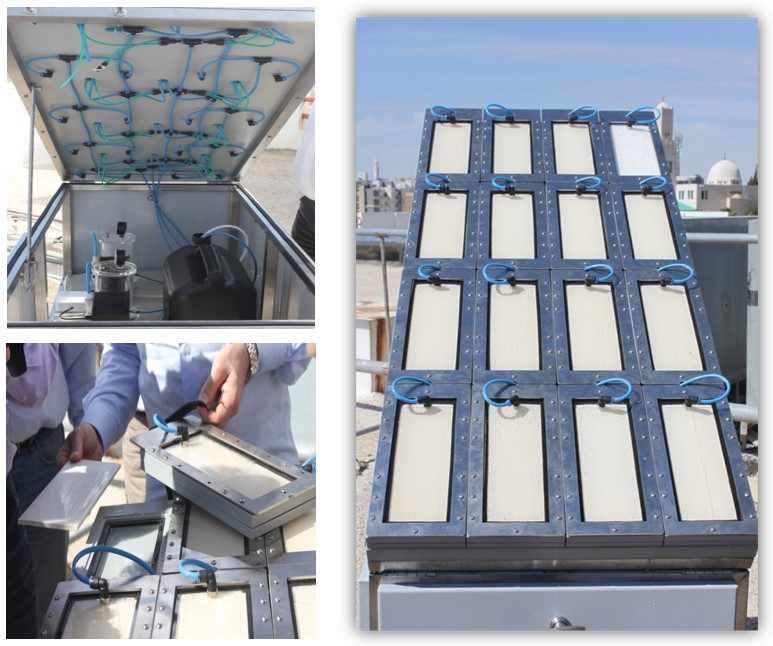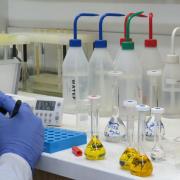Field Pilot Facilities
Current pilots conducted by WRC-TAU:
Quality of water produced from atmospheric water
Due to the increasing of, worldwide, drinking water scarcity, alternative out-of-the-box solutions are required. Atmospheric water is a potential source of potable water. The earth's atmosphere is a huge and renewable water resource, it contains approximately 12,900 billion tons of freshwater, 98% are vapor and only 2% are in the condensed state (clouds, fog). When the concentration of water vapor (the most significant greenhouse gas) varies significantly in the atmosphere, from 0.001% volume in the coldest regions to 5% in hot tropical air masse.
In this research pilot, we examine the relationship between meteorological conditions and air quality parameters on the chemical characteristics of the produced dew water. Although several researches have been studied the chemical characteristics of dew water, the air quality and meteorological conditions' impacts on dew are not well understood.
This pilot study uses a unique Atmospheric Water Generator (AWS), a device that converts water vapor into liquid water mostly by condensation, which can be programmed to produce water at a specific time throughout the day. Also, it is the most comprehensive study that uses the largest variety of methods and technologies to examine the air-water relationship.
Currently, the AWS is located on the roof of a building at Tel Aviv University, modeling an urban area. During the summer of 2020, an AWS machine will be placed in Haifa bay (a highly polluted region), to compare how the different regional and local atmospheric conditions influence the dew water.
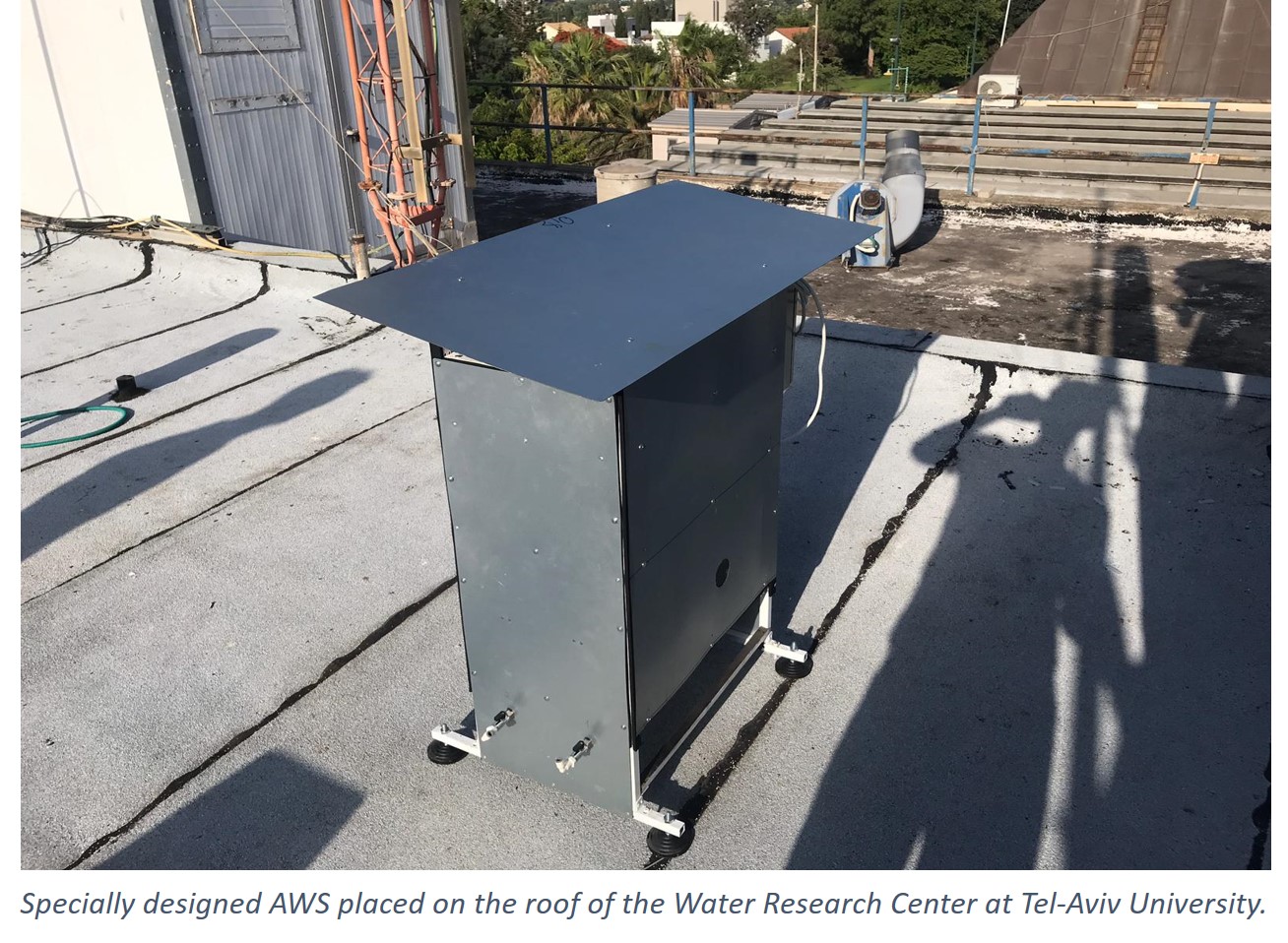
Hybrid MBR-modified AOP technology pilot system for wastewater treatment
Our study group developed, after five years of laboratory experiments, and recently launched, a field pilot treatment system at the local WWTP to apply our novel pre-treatment technologies, which are improving the degradation process and mechanisms of the traditional ozone-based AOP. The main goal is to degrade and remove, in situ, the highly toxic persistent compounds (PCs), which are still detected in high-quality municipal effluent after secondary and/or tertiary treatment. This pilot platform is based on laboratory intensive research to study many aspects of the above problem:
a) Developing analytical methods to identify, concentrate and quantitate the selected compounds.
b) Developed various new generation of AOP treatments
c) Determines the AOPs kinetics constants of specific persistent compounds.
c) Examination of the selected AOP process in both, lab-scale and pilot-scale for efficient removal and degradation of the selected compounds.
d) Optimized the existing treatment technologies for a combined cost-efficient elimination.
e) Assessment of the aquatic toxicity threat of the original PCs and their degradation products with or without AOP treatment.



Agan Adama
Agan Adama develops crop protection products including herbicides, insecticides, and fungicides. Environmental Protection Technologies Ltd. (EPT) designed treatment technology to remove the readily biodegradable organic compounds and nitrogenous compounds for the production of high-quality effluent. The herbicides manufacturing wastewater treatment plant does not comply with recalcitrant compounds due to stringent sea discharge regulations, and therefore contacted TAU to examine the impact of various combinations of advanced oxidation processes as O3, O3/H2O2 and UV/H2O2 and integration of all processes UV/H2O2/O3 on the removal of Adsorbable Organic Halides (AOX). We have recommended a method and process that is currently being examined in a pilot study at Agan Adama pilot site inflow conditions.
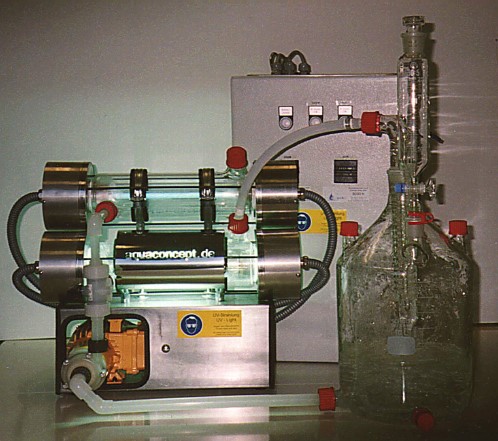
Shafdan
The Shafdan reclamation project facility (Tel Aviv, Israel) practices soil aquifer treatment (SAT) of secondary effluent with hydraulic retention times (HRTs) of a few months to a year for unrestricted agricultural irrigation. During the SAT, the high oxygen demand of the infiltrated effluent causes anoxic conditions and mobilization of dissolved manganese from the soil. An additional emerging problem is the occurrence of persistent trace organic compounds (TrOCs) in reclaimed water that should be removed prior to reuse. An innovative hybrid process based on biofiltration, ozonation, and short SAT was proposed for the treatment of the Shafdan secondary effluent to overcome limitations of the existing system and to reduce the SAT's physical footprint. Ozonation efficiently reduced concentrations of persistent TrOCs and supplied sufficient dissolved oxygen for the fully oxic operation of the short SAT with negligible manganese dissolution.
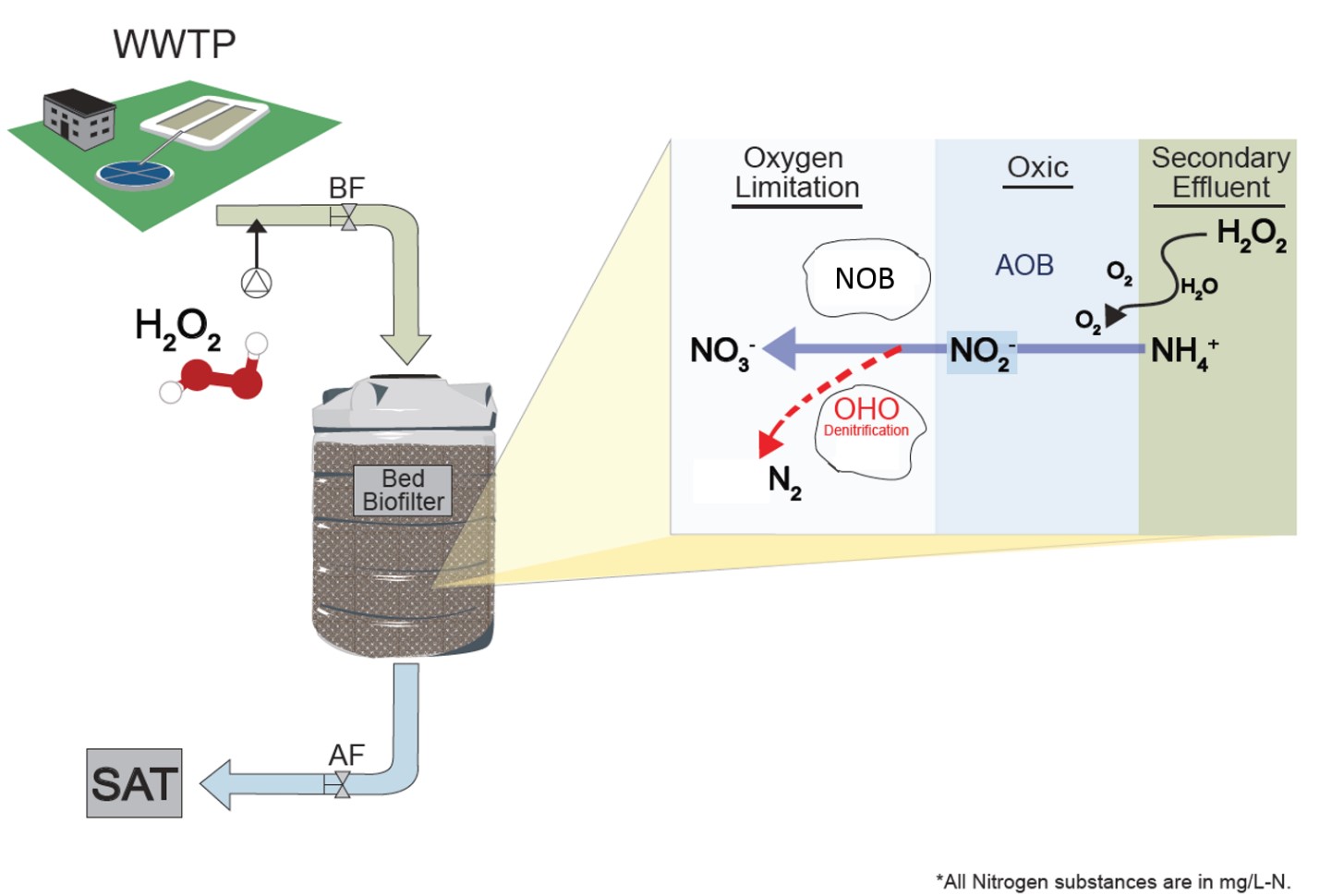

NATIOMEM - Nano-structured TiON Photo-Catalytic Membranes for Water Treatment
The main objective of the project was to develop a novel photocatalytically active membrane for drinking and wastewater treatment. The membrane consisted of a porous substrate with a photocatalytic coating on the surface. The coating was made of nitrogen-doped titanium dioxide (TiON), which can induce photocatalysis by irradiation in the visible range of the solar spectrum. The coated membrane should be integrated into a point-of-use treatment system for rural application in areas where electricity is not available, and for decentralized treatment of wastewater for non-potable recycling.
The TiON coatings were transferred to microfiltration membrane substrates, including ceramic and metal membranes. The photocatalytic activity of the coated membranes was quantified in the laboratory, using a custom-made flow cell equipped with a solar simulator. The best results were achieved with a sol-gel coating on an aluminum oxide (Al2O3) membrane. Compared to undoped titanium dioxide (TiO2), the TiON-coated membranes had significantly higher photocatalytic activity when illuminated with the full solar spectrum, lower dependence on wavelength in the UV region, and some activity in the visible range of the spectrum. Also, a high inactivation of model viruses could be achieved.
Based on the results from laboratory testing, three pilot plants with photocatalytic membranes were designed and set up in South Africa and Jordan. The degradation of a model compound produced conclusive results only when the water was passed over the coated membrane several times. We had interference from constituents in pre-treated, natural feed water, and by the hydraulic conditions. The low pressure, low flux, low fouling strategy was ineffective. To function optimally, the photocatalytic membrane needs to be built into a treatment system with efficient pre-filtration, for example, a bio-sand filter. Recirculation of the water for operation and cleaning can be achieved by a small pump, powered by electricity from the grid, or from a solar panel. Requires rapid recirculation through the membrane.
The combined filtration and oxidation process should trap and inactivate microorganisms, as well as oxidize chemical micropollutants. It was envisaged to develop the point-of-use treatment system into a technically and economically viable treatment option for:
- Production of safe drinking water from contaminated groundwater and surface water after simple pre-treatment, in rural areas with limited infrastructure (e.g. no electric power grid).
- Disinfection of microbial unsafe piped drinking water.
- Treatment of grey wastewater after pre-treatment, for non-potable reuse.
In Jordan, the government has issued an official strategy to reuse grey wastewater for non-potable purposes. The consortium decided to develop a photocatalytic unit to treat domestic greywater. The design aims at a roof-top solution for urban areas. Decentralized reuse of treated greywater for toilet flushing and irrigation would reduce freshwater consumption and alleviate the drastic water scarcity in the region.
